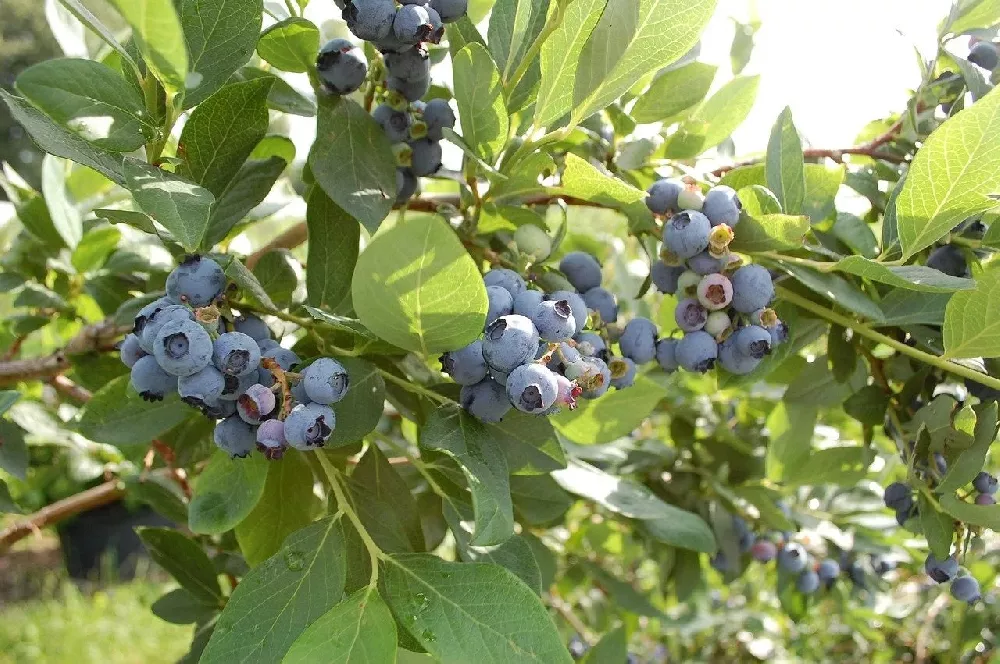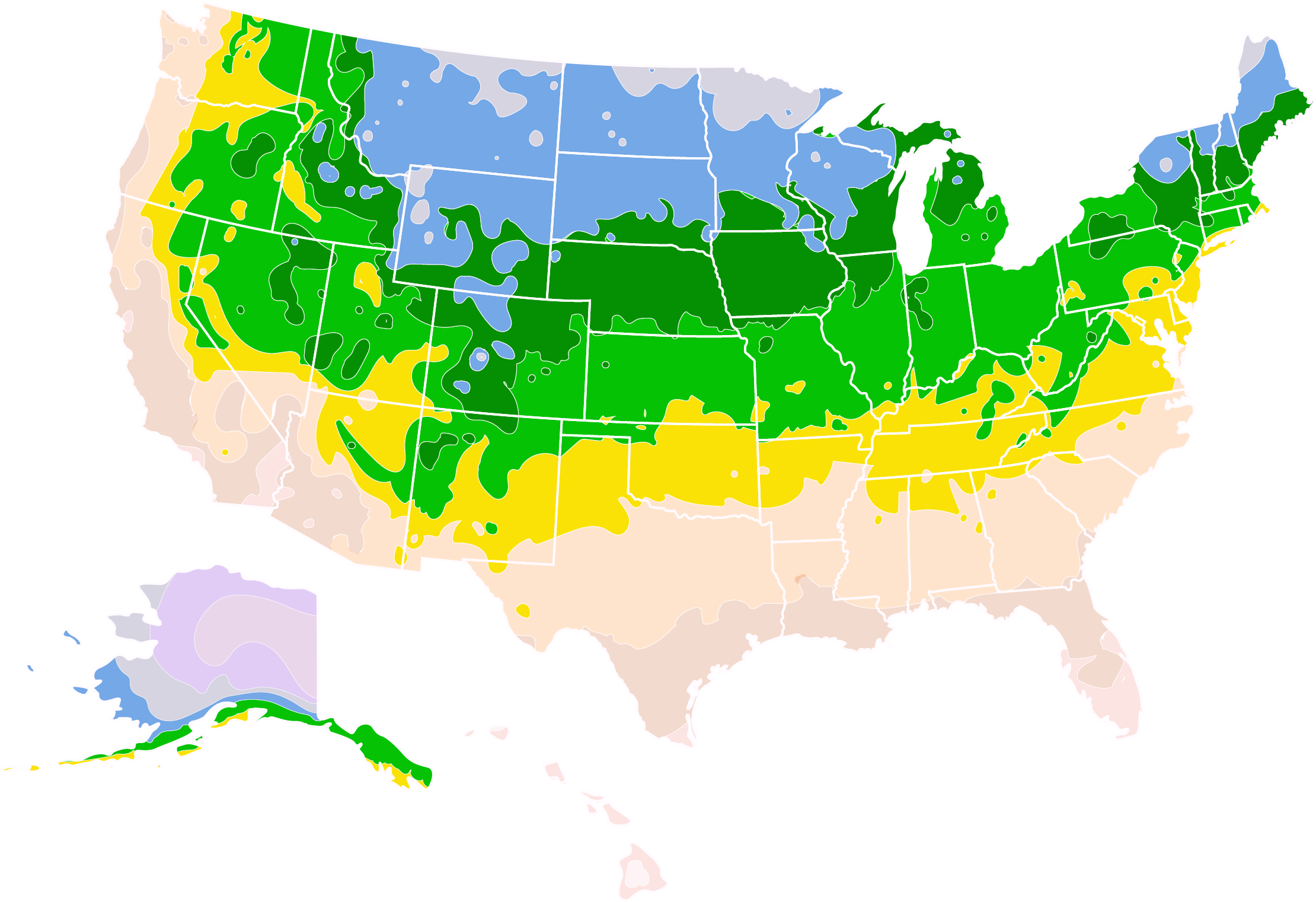- Home >
- Shrubs and Bushes >
- 3-in-1 Blueberry Bush (Northern Highbush)
3-in-1 Blueberry Bush (Northern Highbush) for Sale - Buying & Growing Guide
- Ships in 1-2 days
- 1-Year Warranty Eligible
- Pots or accessories are not included unless specified in the product options.
Shipping Details:
Once your order is shipped, you’ll receive an email with a tracking number and estimated delivery date. Most orders ship immediately, but some items are seasonal and may only ship in spring or fall. These products are noted on the website.
The 3-in-1 blueberry bush (Vaccinium corymbosum) is a mesmerizing combination of blueberry varieties: ‘Legacy,’ ‘Sunshine Blue,’ and ‘Pink Lemonade.’ The three cultivars are grafted onto a single root stock. This blueberry bush has different intervals of ripening — ‘Sunshine Blue’ and ‘Pink Lemonade’ will fruit around mid-summer while legacy prepares for a late-summer harvest. Here are some other fast facts about 3-in-1 blueberry bushes:
- Suitable for USDA hardiness zones 4 through 7.
- Drought and heat tolerant.
- Matures to a height of six to eight feet.
Plant Care
Sunlight
Prefers full sunlight but can occasionally grow well in partial shade.
Watering
Don't allow the soil to become dry for an extended period of time. Water regularly throughout the growing season.
Fertilizing
Strong preference for fertilizers that are acidic and high in nitrogen. Apply fertilizer in the early spring.
Planting and Care
Planting instructions
3-in-1 blueberry shrubs prefer a planting location with full sun and adequate drainage. To plant your shrub, start by digging a hole to the depth of the root ball and twice as wide. Place the plant in the hole and backfill with dirt, keeping your blueberry bush upright. Tamp the soil down lightly and apply a generous helping of water. Top dress soil around a newly planted shrub with a three-inch layer of mulch – pine bark, pine needles, or wood chips. Space your shrubs approximately 10 feet apart to give them enough space to thrive.
Watering and nutrients
For the first few weeks after planting, water your blueberry bushes every few days. They prefer moist areas, but soggy, over-watered soil will cause problems for the roots. Watch for drooping foliage, as this will signify either under or over-watering. To ensure robust fruit production, you may use an Espoma Berry Blend fertilizer with an NPK of 4-3-4 around the base of your bushes in the spring before flowering occurs. Be sure to water well after fertilizing.
Pollination
The 3-in-1 blueberry shrubs are self-fertile, producing fruit on their own. However, adding additional blueberry bushes nearby will increase the size of your harvest. This effect is even stronger if the other bushes are of different varieties. Blueberry pollen is relatively heavy and sticky, so it does not spread well through wind dispersion. Instead, the bushes attract a variety of bee species, as well as other insects, to spread their pollen to neighboring plants. The Southeastern blueberry bee is one of the plant’s most dedicated pollinators.
Pruning
Blueberry bushes will benefit from a yearly pruning. This allows you to remove dead and dying branches, preparing the bush for another productive year. Young plants may not be able to handle the shock of pruning. It’s best to wait until the second or third year before pruning a new blueberry shrub. Prune blueberry shrubs in winter when the plants are dormant. When deciding where to cut, try to promote airflow through the shrub and remove any over-ripe berries.
Pests and diseases
Powdery mildew and gray mold are commonly found on blueberry bushes. These are fungal diseases that can spread from plant to plant, so it is best to tackle the problem with haste. Remove any infected branches and dispose of them far away from your bushes, as the fungus can still spread through the fungal spores left on debris. You can also pretreat against powdery mildew and gray mold with a spray, which will coat the leaves to prevent fungal spores from growing on leaf surfaces.
Flea beetles, Japanese beetles, and leafhoppers are all known to infest blueberry bushes. You can use sticky traps and floating row covers to defend against these pests. If necessary, you can also apply an insecticide.
Harvesting
3-in-1 blueberry bushes provide bountiful harvests at different times throughout the summer. The ‘Sunshine Blue’ and ‘Pink Lemonade’ varieties will begin to ripen around July, while legacy ripens in late August. These times can vary depending on your climate and region. Blueberries are ripe when they have turned fully blue – white, green, or pink berries are immature and will not finish ripening off the bush. Gently pick each ripe berry and collect them in a bucket.
FAQs
What are the growth stages of a blueberry bush?
Mature blueberry bushes go through a predictable set of growth stages every year. Over winter, the plant forms small pink flower buds on the tips of branches. These buds burst open into white or pink flowers as the bush begins to produce foliage and new shoots. After the flowers bloom and the petals fall, the fruit begins to grow. When the blueberries have ripened and been harvested, the plant undergoes a fall color change that turns the foliage purple and red. Then the leaves fall and the cycle repeats itself.
How big do blueberry bushes grow?
3-in-1 blueberry bushes grow to about eight feet tall and six feet wide. When planted about 10 feet apart, the bushes will grow to form a hedge. You can expect growth rates of approximately one foot per year. The plant reaches maturity after five or six years — this is when it will really start to produce large crops. The bush will no longer have to spend energy on branch and root growth, instead focusing exclusively on fruit production.
How many bushes should I plant for my family?
The amount of berries produced by a blueberry bush can vary wildly. Production can be influenced by region, cultivar, and weather patterns. A mature blueberry bush will likely produce between five and 10 pounds of fruit per year. Depending on the size and diet of your family, planting six to eight bushes will guarantee a nearly unlimited supply of berries. If you plant more, you may even have enough to share with friends and family.
Compare Similar Products
Customer Reviews
Planted it the day I received it. It is still green. Will have to wait til spring to see how it does. PS.. Started pulling the labels off before I realized they were the labels for each type of Blueberry.










